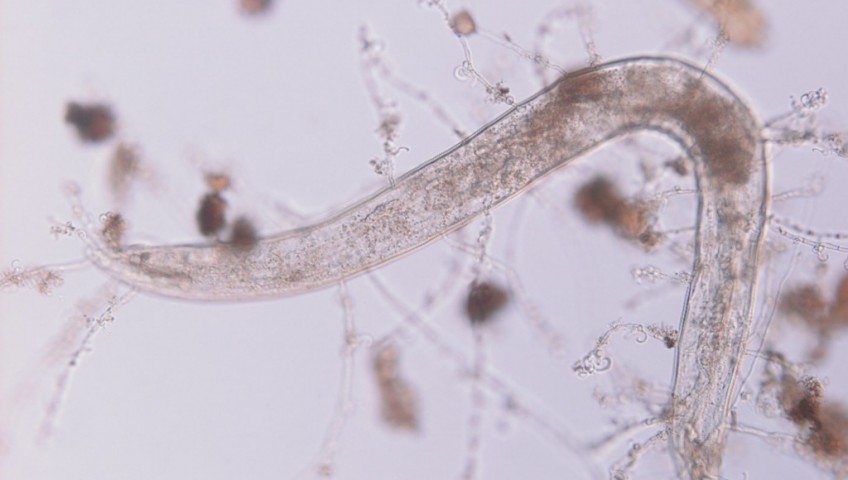An often misunderstood soil organism, nematodes are the most prolific multi-cellular organisms on the planet and key to the correct function of soil and grow media.
In much the same way as the interaction of protozoa with other organisms helps to support correctly functioning soil, nematodes are very important for nutrient cycling. Being one of the larger soil based lifeforms they can be observed with a simple lens although their very active habit can make these worm-like creatures difficult to count or correctly identify.
When interpreting the laboratory analysis we deal in actual (calculated) numbers of nematodes per gram of the sample material. A higher value could mean a number of things, ranging from a great environment to a severe situation.

Understanding the composition of this community in terms of functional group is highly important.
The basic functional groups that we are concerned with are:
Bacteria feeders
This group of beneficial nematodes feeds on bacteria, helping to keep the bacterial populations balanced.
Fungal feeders
The nematodes in this group feed on and keep the fungal population balanced. In conjunction with the bacteria feeding nematodes, they can promote nutrient cycling in the root zone by maintaining adequate levels of plant available N. Many of the fungal feeding nematodes also assist in keeping disease under control as they consume pathogenic fungi.
Predatory nematodes
Concerned with consuming other nematodes, typically they prey on root feeders and can help to minimize the damage from them. This group also consume protozoa and some types of micro-arthropods. Again, these particular nematodes benefit the conditions when growing a crop.
Root feeders
This group of nematodes are truly parasitic to plants. There are a wide variety of individual types and can be a real problem for the production and heath of the plant. One of the more commonly known types is the Potato Cyst Nematode (gen. Globodera) which is the main culprit why nematodes are incorrectly considered as all being bad.
Being an active group, these organisms respond rapidly to changes within the conditions in the root zone and fluctuations to the populations of other organisms (their primary food source). In this way, the functions of conditions in the rhizosphere can also take a turn for the worse if not monitored on an ongoing basis. If you need help keeping track of soil and plant data you can ask about the new tool called i-Soil that we have just launched.
In soil amendment products, the number of nematodes can also be measured: in liquids, the numbers are typically low as they do not like liquid environments; amendments such as compost, can provide a source of very high numbers of nematodes, but usually a low diversity. This makes compost one of the best sources for nematode inoculants. If you would like to test your compost, get in touch with SoilBioLab.
Simon runs Mind, Body & Soil and is Co-founder of SoilBioLab. He specialises in services and solutions for soil fertility management. You can follow him on twitter @peat_free or email him at simon@mindbodysoil.co.uk
